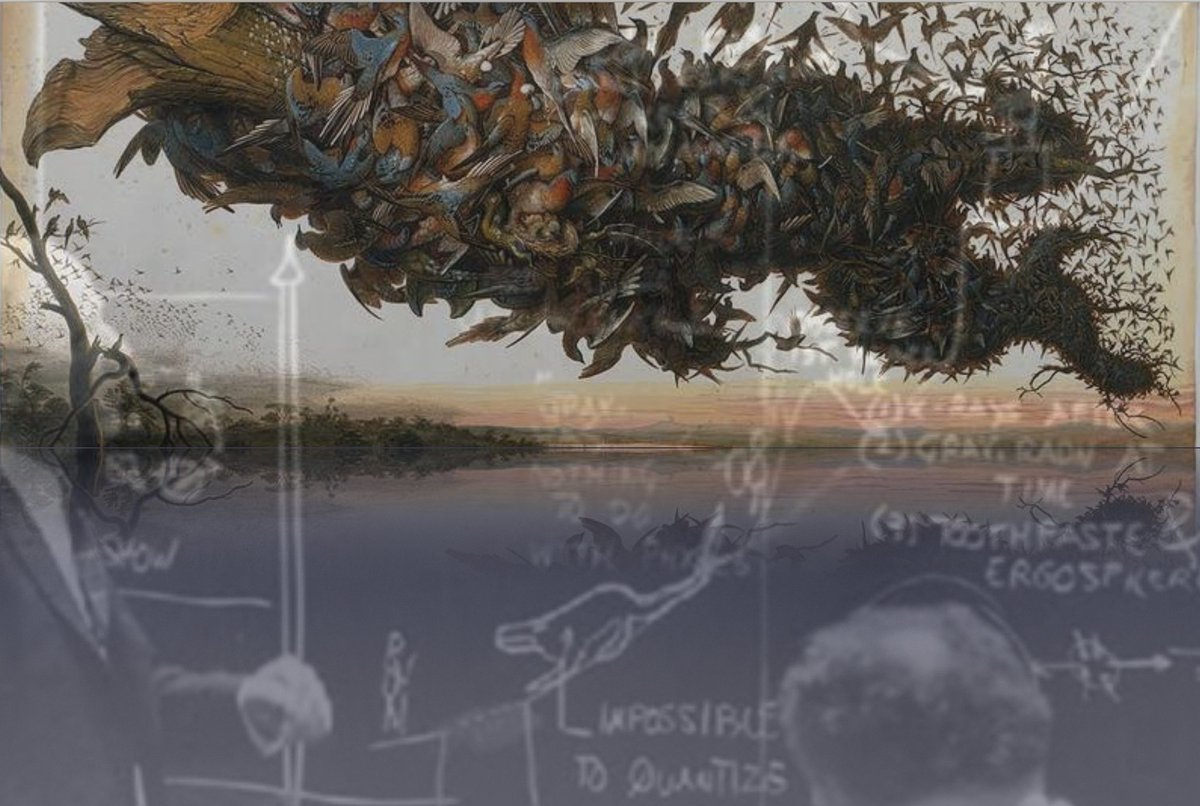RESEARCH ARTICLES, REVIEWS, PERSPECTIVES + ESSAYS
UNDER CONSTRUCTION
MICRO-MACRO, STRATEGIC STATISTICAL MECHANICS, COLLECTIVE COMPUTATION, DERIVATION, PREDICTION, LAW, PHENOMENOLOGICAL, EMERGENCE || Better living through physics: Nowak and colleagues' explanation of the evolution of altruism (Nature 466, 1057–1062; 2010) in terms of individual-level selection might be reconciled with the views of their kin-selection opponents by striking an analogy with statistical mechanical and thermodynamic treatments in physics. Statistical mechanics provides the microscopic basis for the macroscopic variables in thermodynamics, which is an equilibrium theory treating aggregate variables. As with thermodynamics, traditional multilevel selection theory is based on equilibrium solutions operating on nominal, aggregate variables. In the Hamilton kin-selection framework, variables correspond to the terms benefit, cost and relatedness. But because that treatment is not fundamentally mechanistic, it is often unclear what the units of these variables are, and how best to measure them. Population genetics presents an evolutionary analogue of statistical mechanics that complements Hamilton's evolutionary thermodynamics. Hamilton's rule — which expresses relatedness between the helped and the helper in terms of cost and benefit to the fitness of both — and its related inequalities all express dependencies among macroscopic variables of state in structured populations. The greater complexity of biological systems over physical ones, and their strong interdependency, make for a zoo of biological macroscopic laws with many multilevel selection principles, each with its adherents and disciples. The great promise of evolutionary statistical mechanics is that it should allow us to enumerate the full space of possible fundamental evolutionary inequalities and the mechanistic conditions under which they apply, thence identifying those with the greatest empirical generality.
COLLECTIVE COMPUTATION, CRITICALITY, TUNING, MICRO-MACRO, INFORMATION FLOW, CIRCUIT TO ISING, CHANNEL SWITCHING, HOURGLASS EMERGENCE || Many adaptive systems sit near a tipping or critical point. For systems near a critical point small changes to component behaviour can induce large-scale changes in aggregate structure and function. Criticality can be adaptive when the environment is changing, but entails reduced robustness through sensitivity. This tradeoff can be resolved when criticality can be tuned. We address the control of finite measures of criticality using data on fight sizes from an animal society model system (Macaca nemestrina, n=48). We find that a heterogeneous, socially organized system, like homogeneous, spatial systems (flocks and schools), sits near a critical point; the contributions individuals make to collective phenomena can be quantified; there is heterogeneity in these contributions; and distance from the critical point (DFC) can be controlled through biologically plausible mechanisms exploiting heterogeneity. We propose two alternative hypotheses for why a system decreases the distance from the critical point.
INDUCTIVE GAME THEORY, MICRO MACRO, CIRCUIT, STRATEGY, COLLECTIVE COMPUTATION, MACHINE LEARNING, AGENT BASED MODEL, STRATEGIC STATISTICAL MECHANICS, COGNITION || We consider the value of structured priors in the analysis of data sampled from complex adaptive systems. We propose that adap- tive dynamics entails basic constraints (memory, information process- ing) and features (optimization and evolutionary history) that serve to significantly narrow search spaces and candidate parameter values. We suggest that the property of “adaptive self-awareness”, when applicable, further constrains model selection, such that predictive statistical models converge on a systems own internal representation of regularities. Prin- cipled model building should therefore begin by identifying a hierarchy of increasingly constrained models based on the adaptive properties of the study system.

